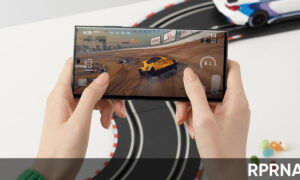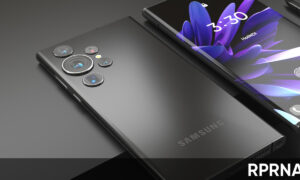When gaming, the graphics processing unit (GPU) is your best friend. Takes everything you see on the screen, from the user interface to the distant mountains. It works in conjunction with the CPU, but in reality, it does the heavy work of heavy lifting, so we need to treat it properly to keep it happy and hopefully run.
Unfortunately, there are many things on your PC that make virtual rain clouds hover over the performance of your GPU. But it is not possible, here’s how to speed up your graphics card to get the best gaming experience.
Stay tuned with us via Telegram
Note: This guide applies to Windows 10 PCs, but some instructions also apply to macOS. We will also focus on the GPU in this guide. This is a major part of the performance in sports, but it is not the only part. For more general tips, see our guide on how to boost your FPS on PC.

Update or refresh your drivers
This should be your first step in speeding up GPU performance, whether your PC has integrated graphics or a discrete GPU. Since this chip handles most of the visual load, installing the latest drivers needs to be a priority.
If you’re unsure about what’s installed in your PC, perform the following in Windows 10:
Step 1: Right-click on the Start button and select the Device Manager option on the pop-up menu.
Step 2: With Device Manager open, click Display Adapters to expand and reveal your GPU(s).
You should see at least one GPU on the expanded list. If your PC has an Intel CPU or an AMD GPU, then you’ll see one listing for Intel or AMD Radeon. If you also have a stand-alone GPU, you’ll see an additional listing for an Nvidia GeForce or AMD Radeon chip.
For this example, our Alienware laptop lists Intel HD Graphics 530 (integrated) and Nvidia GeForce GTX 1080 (discrete). Due to this setup, games default to the more powerful GeForce chip. This is the driver we want to update.
To get new drivers, follow these links:

When installing the driver, uninstall the current software suite and use AMD’s “Custom Install” option to install the current version or Nvidia’s “Clean Install” option. You may want to consider using a performance driver uninstaller first, as it does a great job of cleaning up old drivers, but it’s definitely not necessary.
If you have Nvidia’s GeForce Experience desktop client installed, it will usually send a notification when a new driver is available. If it does not install, manually download and click on the link above to update.
Update Windows 10 and DirectX
. Having the latest DirectX version means having the latest platform that allows your GPU to communicate with the games you’re running. Older versions work, but you can almost instantly boost your performance in-game simply by updating to the latest version.
Step 1: Type dxdiag in the search box on the taskbar and press Enter.
Step 2: The DirectX Diagnostic Tool appears on your screen with the System tab loaded by default. Locate the version number listed under System Information, as shown above.
Microsoft updates DirectX through the Windows Update feature. If you’re currently not running DirectX 12, you’ll need to manually update your PC.
Step 1: Click the Start button followed by the Gear icon located on the Start menu’s left edge.
Step 2: Select Update & Security within the Settings app.
Step 3: Click the Check for Updates button.
Note: Older graphics cards may not support DirectX12, so if this update doesn’t change your DX version, that may be the cause.

Overclocking
One way to improve GPU performance is to overlock it. This is done to squeeze the frequency and voltage of the GPU core and its memory at extra speed. If you are not accustomed to overclocking parts, be careful and read extensively and deeply before you begin. Improper settings can damage the chip. What’s more, the insufficient cooler can cause overheated GPUs to overheat and crash.
Like the CPU, you can overlock the GPU using desktop software. One solution is MSI’s Afterburner, which scans your GPU and finds the highest, most stable overclock settings. The other is EVGA’s Precision X1, which supports GeForce RTX graphics cards, with GTX support ‘coming soon.’
Clean your PC
If your graphics card is too hot, it can be discarded or slowed down to prevent damage to its fragile parts. If the Intex fans and filters are covered with dirt, a sufficient amount of airflow will not remove heat from the components, including the GPU, leading to overheating.
Cleaning all intake fans using compressed air is your first line of defense. Next, turn off your PC, remove the power cord, ground yourself, and remove the side panel of your PC. Use compressed air to remove dust collected on the parts.
Note: Resist the urge to use a vacuum cleaner. The static buildup can damage your PC’s components.
For laptops, your only option is to blow dust out of the intake fans. If you’re lucky, there’s a vented lid covering these fans you can easily remove and blow dust directly off the fans.
Keeping your PC clean is vital to its overall health and performance, whether you’re gaming or just browsing the web.
Improve the airflow
Cleaning your desktop or laptop can help improve airflow, and you may need even more. For desktops, you may have space in the frame for additional fans on the front, top, and bottom. Extra fans will increase the noise level of your PC. However, they do reduce overall heat levels.
For laptops, you cannot install a fan. What you can do, though, is buy a cooling pad under your laptop. It usually has two huge 140mm fans that blow cold air against the bottom of the laptop. The error is dust collection, which means you have another tool to keep it clean.
Do your research before restarting and note that removing your stock cooler will void the warranty of your GPU.
Adjust power settings
If you are gaming on a laptop, connect it to a power outlet. The GPU (CPU) usually crashes when the laptop is unplugged because lithium-ion batteries cannot supply enough power output for maximum performance without wasting battery life. There may be a setting in the BIOS to turn off CPU throttling, but GPUs have hard-coded instructions to reduce the battery power that you can not change.
Adjusting the power settings on desktops and laptops plugged into a wall outlet might boost GPU performance, however.
Step 1: Click the Start button followed by the gear icon located on the Start Menu’s left edge.
Step 2: Select System within the Settings app.
Step 3: The Display panel appears by default. Select Power & Sleep located on the left.
Step 4: Scroll down and select the Additional Power Settings link.
On laptops, you can reach the same panel by right-clicking on the battery icon located next to the system clock. Select Power Options on the pop-up menu.
Step 5: Select the High-Performance option.
If you click the Change Plan Settings link, Windows 10 presents a Change Advanced Power Settings link. Click that and a pop-up appears listing all settings that fall under High Performance. Don’t tweak these settings unless you’re extremely familiar with Windows 10.












